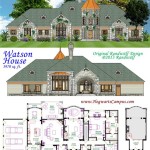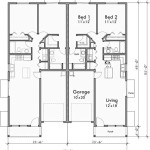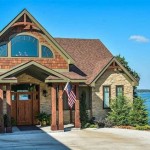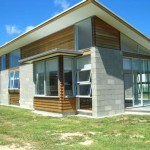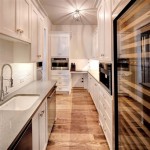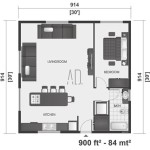Small Single-Level Home Plans: Maximizing Efficiency and Comfort
Small single-level home plans offer a compelling solution for a diverse range of homeowners. These designs, characterized by their compact footprint and lack of stairs, are gaining popularity due to their affordability, accessibility, and ease of maintenance. This article explores the key considerations and benefits associated with small single-level home plans, providing insights into optimizing space, functionality, and overall livability within a limited area.
A single-level home, often referred to as a ranch or bungalow, presents several advantages. The absence of stairs makes it ideal for aging in place or for individuals with mobility limitations. Construction costs are generally lower compared to multi-story homes due to simplified structural requirements and reduced exterior wall area. Heating and cooling are often more efficient in single-level homes, contributing to lower utility bills. Furthermore, these homes often promote a seamless connection between indoor and outdoor living spaces, enhancing the overall quality of life.
However, designing a small single-level home requires careful planning and meticulous attention to detail. Effective space utilization is paramount. Every square foot must be thoughtfully considered to ensure functionality and avoid a cramped or claustrophobic feel. The design should prioritize open-concept layouts, strategic placement of windows for natural light, and incorporation of multi-functional spaces to maximize the available area. The selection of appropriate materials, fixtures, and finishes also plays a crucial role in creating a comfortable and aesthetically pleasing living environment.
Optimizing Space and Layout
One of the primary challenges in designing a small single-level home is maximizing the use of limited space. Open-concept layouts are a common and effective strategy. By combining the living room, dining area, and kitchen into a single, interconnected space, the design eliminates the need for dividing walls, creating a more spacious and airy feel. This open flow promotes natural light penetration and enhances social interaction within the home.
Careful consideration should be given to the placement of furniture and appliances to optimize traffic flow and avoid creating bottlenecks. Built-in storage solutions, such as bookshelves, cabinets, and window seats with integrated storage compartments, can help minimize clutter and maximize usable space. Vertical storage is particularly important in smaller homes. High shelves, tall cabinets, and lofted storage areas can effectively utilize unused vertical space.
Another technique for optimizing space is the use of multi-functional rooms. A guest room can double as a home office, a dining area can serve as a workspace, or a living room can be transformed into a home theater. Flexible furniture, such as convertible sofas, folding tables, and stackable chairs, can be easily adapted to different needs and purposes, maximizing the versatility of the available space.
Consider the footprint of each room. For example, smaller kitchens often benefit from efficient layouts like galley kitchens (two parallel counters) or L-shaped kitchens that maximize counter space and storage within a smaller area. Bathrooms can be designed with features like wall-mounted sinks and toilets to save floor space and create a more open feel. Reducing hallway lengths can also significantly contribute to maximizing usable space within the home's overall footprint.
Outdoor space can be integrated into the design, creating an extension of the living area. A strategically positioned patio, deck, or screened porch can offer additional space for relaxation, dining, and entertaining. Large windows and sliding glass doors can blur the boundaries between indoor and outdoor spaces, creating a seamless transition and enhancing the sense of spaciousness.
Accessibility and Aging in Place
Small single-level home plans are particularly well-suited for individuals seeking accessible and age-friendly housing. The absence of stairs eliminates the risk of falls and makes it easier for people with mobility limitations to navigate the home. Wide doorways and hallways can accommodate wheelchairs and walkers, ensuring ease of movement throughout the house.
Universal design principles should be incorporated to enhance accessibility and usability for people of all ages and abilities. These principles include features such as lever-style door handles, rocker-style light switches, and grab bars in bathrooms. Countertops and sinks should be installed at a comfortable height for wheelchair users. Roll-in showers with adjustable showerheads provide safe and convenient bathing options.
Proper lighting is crucial for accessibility and safety. Adequate illumination can help prevent falls and improve visibility for individuals with impaired vision. Task lighting should be installed in areas where specific activities are performed, such as reading, cooking, or working. Motion-sensor lights can automatically turn on when someone enters a room, providing hands-free illumination.
Consider incorporating smart home technology to further enhance accessibility and convenience. Voice-activated controls can be used to operate lights, appliances, and other home systems. Automated window coverings can be easily adjusted to control sunlight and privacy. Remote monitoring systems can provide peace of mind for caregivers and family members.
Landscaping should also be considered from an accessibility perspective. Ramps and pathways should be smoothly graded and free of obstacles. Raised garden beds can make gardening accessible to individuals with limited mobility. Non-slip surfaces should be used on walkways and patios to prevent falls.
Energy Efficiency and Sustainability
Small single-level homes offer excellent opportunities for incorporating energy-efficient and sustainable design features. The compact footprint reduces the amount of energy required for heating and cooling. Proper insulation, energy-efficient windows, and a well-sealed building envelope can minimize heat loss in the winter and heat gain in the summer.
High-efficiency heating and cooling systems, such as heat pumps and geothermal systems, can significantly reduce energy consumption and lower utility bills. Programmable thermostats allow homeowners to customize temperature settings based on their schedules and preferences, further optimizing energy efficiency. Tankless water heaters provide hot water on demand, eliminating the need to store hot water and reducing energy waste.
Consider incorporating renewable energy sources, such as solar panels, to generate electricity and reduce reliance on fossil fuels. Solar water heaters can be used to heat water for domestic use, reducing energy costs and environmental impact. Green roofs can provide insulation, reduce stormwater runoff, and create a habitat for wildlife.
Water conservation measures can also contribute to sustainability. Low-flow toilets, showerheads, and faucets can significantly reduce water consumption. Rainwater harvesting systems can collect rainwater for irrigation and other non-potable uses. Drought-tolerant landscaping can minimize the need for irrigation and conserve water resources.
Material selection plays a crucial role in sustainable building practices. Choose sustainable materials, such as bamboo flooring, recycled content insulation, and low-VOC paints and finishes, to minimize environmental impact and improve indoor air quality. Locally sourced materials can reduce transportation costs and support local economies.
Proper ventilation is essential for maintaining healthy indoor air quality. Heat recovery ventilators (HRVs) and energy recovery ventilators (ERVs) can provide fresh air while minimizing energy loss. These systems exchange heat and moisture between incoming and outgoing air streams, improving air quality without significantly increasing energy consumption.
Ultimately, careful planning and attention to detail are essential for creating a small single-level home that is both functional and aesthetically pleasing. By optimizing space, prioritizing accessibility, and incorporating energy-efficient features, homeowners can enjoy a comfortable, sustainable, and fulfilling living experience within a compact and affordable design.

48 Ideas House Plans One Story Country Front Elevation For 2024 Remodelhouseplans Small Floor Layout Tiny

Discover The Art Of Building With Struts

10 Small House Plans With Open Floor Blog Homeplans Com

Best One Story House Plans And Ranch Style Designs

Unique One Story House Plans Monster

Small One Story 2 Bedroom Retirement House Plans Houseplans Blog Com

Stylish One Story House Plans Blog Eplans Com
10 Small House Plans With Open Floor Blog Homeplans Com

Small One Story 2 Bedroom Retirement House Plans Houseplans Blog Com

1 Story House Plans For Narrow Lots Drummond


